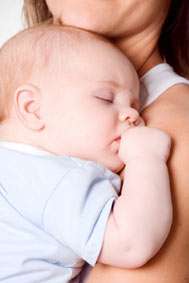SIDS and Co-Sleeping: Debunking the Myths
A recent study released by the British Medical Journal (BMJ) found over half of SIDS cases occurred while the baby was co-sleeping with an adult or another child.

By: Lindsay Hutton
In this article, you will find:
Making co-sleeping safer
If you do choose to bed share with your baby, the Nemours Center offers precautions to follow to make co-sleeping as safe as possible. These tips include:
Most medical experts would say the safest place for an infant to sleep is in a crib that meets current safety standards and has no soft bedding. The best time to transition a baby from a co-sleeping environment is by the age of 6 months, before co-sleeping has become ingrained and other developmental issues, such as separation anxiety, have time to manifest.
Where your child sleeps is a personal choice for you and your family to make, and it's important to know the pros and cons of each option before making a decision. Talking to your child's doctor is the best way to learn about possible risks, and possible benefits, to co-sleeping with your child.